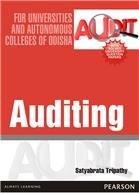




The Bergie Restaurant Group manufactures the bags of frozen French fries used at its franchised restaurants. Last week, Bergie's purchased and used 96,000 pounds of potatoes at a price of $0.80 per pound. During the week, 1,900 direct labor hours were incurred in the plant at a rate of $12.25 per hour. The standard price per pound of potatoes is $1.00, and the standard direct labor rate is $11.95 per hour. Standards indicate that for the number of bags of frozen fries produced, the factory should have used 92,000 pounds of potatoes and 1,700 hours of direct labor. Read the requirements 6 Requirement 1. Determine the direct material price and quantity variances. Be sure to label each variance as favorable or unfavorable. (Enter the variances as positive numbers. Enter currency amounts to the nearest cent and your answers to the nearest whole dollar. Label the variances as favorable (F) or unfavorable (U). Abbreviations used: DM = Direct materials.) Begin by determining the formula for the price variance, then compute the price variance for direct materials. (()=DMpricevariance)= Determine the formula for the quantity variance, then compute the quantity variance for direct materials. ((1)=DMquantityvariance)= Requirement 2. Think of a plausible explanation for the variances found in Requirement 1. One plausible explanation is that Bergie bought (9) price, which resulted in the (10) price variance. However, because the potatoes were (11) As a result, the manufacturing facility (12) potatoes than standards allow. This accounts for the (13) efficiency variance. Requirement 3. Determine the direct labor rate and efficiency variances. (Enter the variances as positive numbers. Enter currency amounts to the nearest cent and your answers to the nearest whole dollar. Label the variances as favorable (F) or unfavorable (U). Abbreviations used: DL = Direct labor.) Begin wth the the direct labor rate variance. First determine the formula for the rate variance, then compute the rate variance for direct labor. \begin{tabular}{l|ll} ( & - & )= DL rate variance \\ ( & - & )= \end{tabular} Now determine the direct labor efficiency variance. First determine the formula for the efficiency variance, then compute the efficiency variance for direct labor. Requirement 4. Could the explanation for the labor variances be tied to the material variances? Explain. The (22) labor rate and efficiency variances (23) be tied to the material variances. For example, if the material variances were the result of purchasing (24) then the factory would use (25) labor in sorting the potatoes. As a result, they would have had to pay workers (26) 1. Determine the direct material price and quantity variances. Be sure to label each variance as favorable or unfavorable. 2. Think of a plausible explanation for the variances found in Requirement 1. 3. Determine the direct labor rate and efficiency variances. Be sure to label each variance as favorable or unfavorable. 4. Could the explanation for the labor variances be tied to the material variances? Explain. (1) Standard hours allowed Actual hours Standard price Actual price Standard quantity allowed Actual quantity purchased (2) Standard hours allowed Actual hours Standard price Actual price Standard quantity allowed Actual quantity purchased (3) Standard hours allowed (4) Actual hours Actual price Actual quantity purchased (5) Standard hours allowed Actual hours Standard price Actual price Standard quantity allowed Actual quantity used (6) Standard hours allowed Actual hours Standard price Actual price Standard quantity allowed Actual quantity used (7) Standard hours allowed (8) (7) Standard hours allowed (8) ActualhoursActualpriceStandardpriceStandardquantityallowedFU Actual quantity used (9) higher lower grade potatoes at a higher (10) favorable lower grade potatoes at a cheaper unfavorable (11) higher grade, some of the potatoes were larger than normal lower grade, some of the potatoes were bad, and could not be used in production (12) had to use more (13) favorable was able to use fewer unfavorable (14) Standard hours allowed Actual hours Standard rate Actual quantity purchased Actual rate (15) Standard hours allowed Actual hours Standard rate Actual quantity purchased Actual rate (16) Standard hours allowed (17) Actual hours Actual quantity purchased Standard rate F Actual rate (18) Standard hours allowed Actual hours Standard rate Actual quantity purchased Actual rate (19) Standard hours allowed Actual hours Standard rate Actual quantity purchased Actual rate (20) Standard hours allowed (21) (22) favorable Actual hours Standard rate F unfavorable Actual quantity purchased U Actual rate (23) could (24) higher grade potatoes (25) less could not lower grade potatoes more the same amount of (26) an overtime premium for fewer hours for their normal hours











